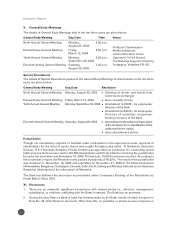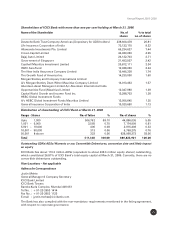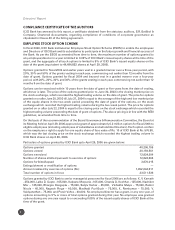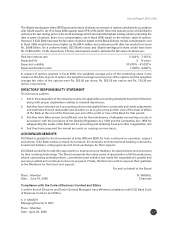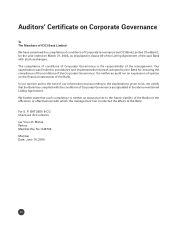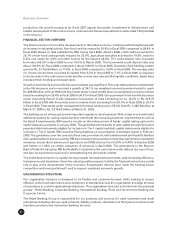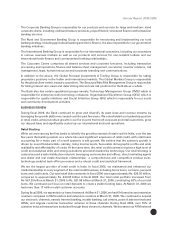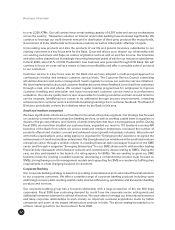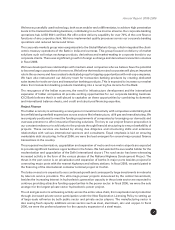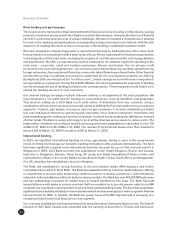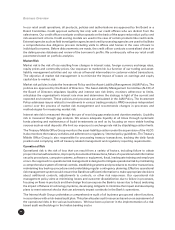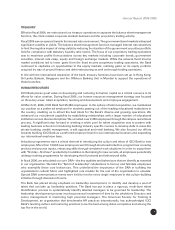ICICI Bank 2006 Annual Report Download - page 30
Download and view the complete annual report
Please find page 30 of the 2006 ICICI Bank annual report below. You can navigate through the pages in the report by either clicking on the pages listed below, or by using the keyword search tool below to find specific information within the annual report.
29
Annual Report 2005-2006
ECONOMIC OVERVIEW
The Indian economy is on a high growth path marked by both broad-based and sustainable growth.
Following the GDP growth rate of 7.5% achieved in fiscal 2005, the Central Statistical Organisation (CSO)
has reported overall GDP growth for fiscal 2006 at 8.4%, highlighting the strong and sustained growth
momentum. The highlight of the economy’s performance in fiscal 2006 was the continued growth of the
industrial sector coupled with a double-digit growth in the services sector. The Index of Industrial
Production (IIP) recorded an annual average growth rate of 8.0% in fiscal 2006 following the growth of
8.3% in fiscal 2005. This growth was driven mainly by continued growth in the manufacturing sector
which grew by 9.0% in fiscal 2006 following a 9.1% growth in the previous year. This was partly offset by
a decline in the growth rate of the mining sector from 4.4% to 0.7%. The electricity sector grew by 5.2%
in fiscal 2006, maintaining the same growth rate as the previous year. The momentum of growth in the
services sector (including construction) continued with a 10.3% growth in fiscal 2006. Agriculture and
allied activities grew by 3.9% during fiscal 2006 reflecting a revival in the sector which was affected by
below normal monsoons during fiscal 2005.
The growth trends were accompanied by overall macro-economic stability, despite a sharp increase in
global oil prices, concerns over global imbalances, rising interest rates globally and in India and rapid
growth in the demand for credit. The annual average rate of inflation as measured by the Wholesale Price
Index was 4.5% for fiscal 2006 as compared to 6.4% for fiscal 2005, with continuing fiscal and monetary
policy interventions aimed at controlling price levels. The year-on-year rate of inflation peaked at 6.0%
for the week ended April 23, 2005 before declining to 4.0% for the week ended March 25, 2006. In view
of volatile oil prices and concerns over global developments, Reserve Bank of India (RBI) increased the
reverse repo rate from 5.00% to 5.25% in October 2005 and then to 5.50% in January. RBI has further
increased the reverse repo rate from 5.50% to 5.75% in June 2006. Liquidity conditions were impacted
during the last quarter of fiscal 2006 due to the redemption of India Millennium Deposits of about US$ 7.1
billion in December 2005, as well as high credit growth. Liquidity conditions have eased subsequently.
The investment pipeline and demand for credit continues to be robust, and global developments, external
inflows and the fiscal position will be key factors impacting liquidity and interest rates during the current
year.
India’s exports stood at US$ 100.6 billion during fiscal 2006, a growth of 24.7% over the previous year.
During the first nine months of fiscal 2006 primary exports recorded a growth of 31.7% and exports of
manufactured goods recorded a growth of 21.2%. According to RBI, invisibles receipts reached US$
62.8 billion during the first nine months of fiscal 2006, a growth of 28.1% over the corresponding period
in the previous year. NASSCOM has reported a growth of 33.0% in Indian software and IT services
exports, to US$ 23.6 billion in fiscal 2006. Increasing oil prices and growing import demand from a
resurgent manufacturing sector have led to a deficit in the current account (US$ 13.5 billion during first
nine months of fiscal 2006). International crude oil prices increased from US$ 55.40 per barrel at March
31, 2005 to a peak of US$ 74.61 per barrel at May 2, 2006 before declining to US$ 69.50 per barrel at June
16, 2006. Net Foreign Direct Investment (FDI) into India was US$ 4.7 billion during the first nine months
of fiscal 2006 while net portfolio investment was US$ 8.2 billion. Foreign exchange reserves continued to
grow, reaching US$151.6 billion on March 31, 2006.
The resilience displayed by the economy in fiscal 2006 is evidence of the broad-based and sustainable
nature of India’s growth momentum. Recognising the developments in the economy, RBI has appointed
a committee to set out a roadmap towards full capital account convertibility. With the resurgence of the
manufacturing sector, robust growth in the services sector and with an expected recovery in agricultural
Business Overview



